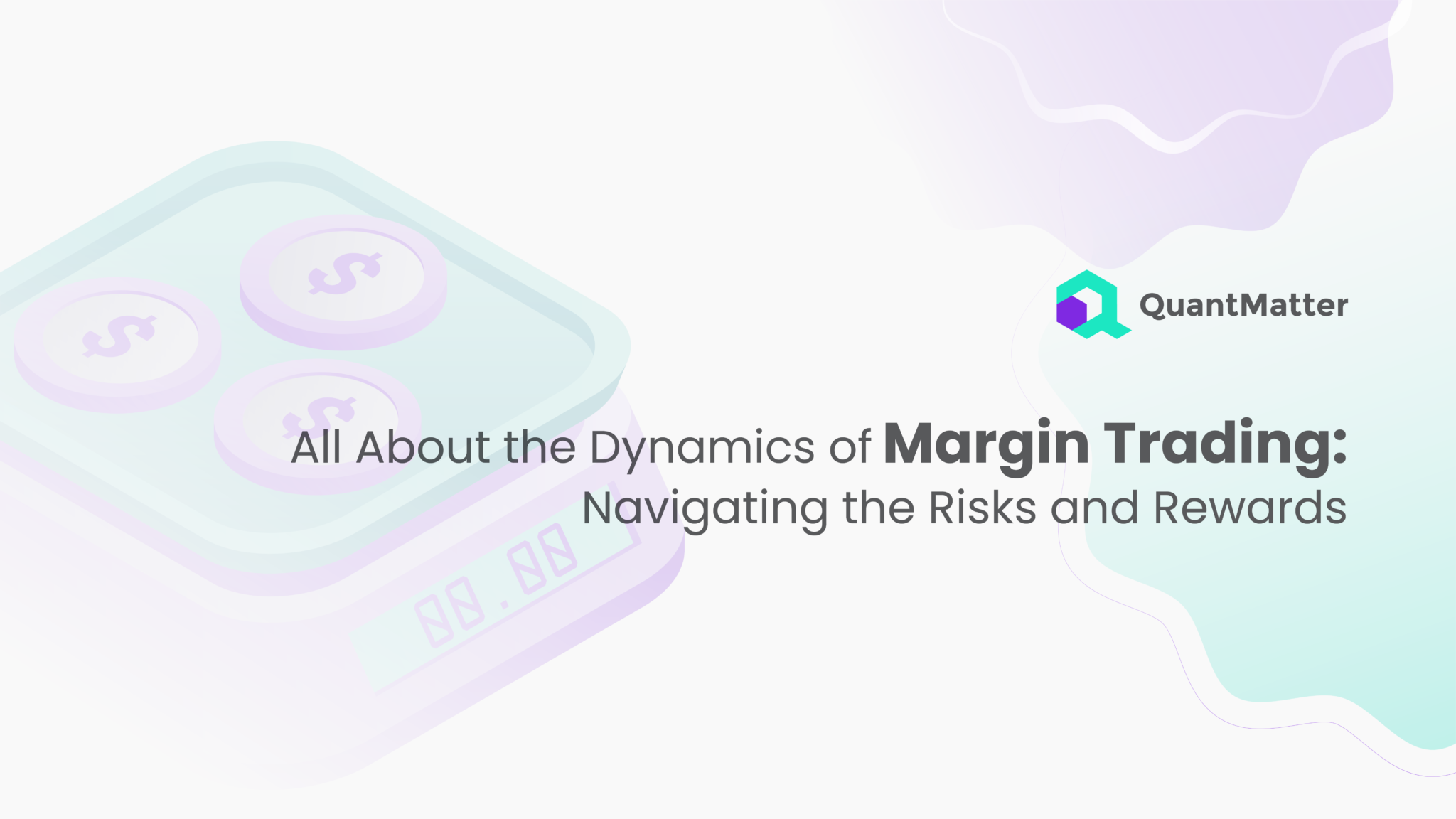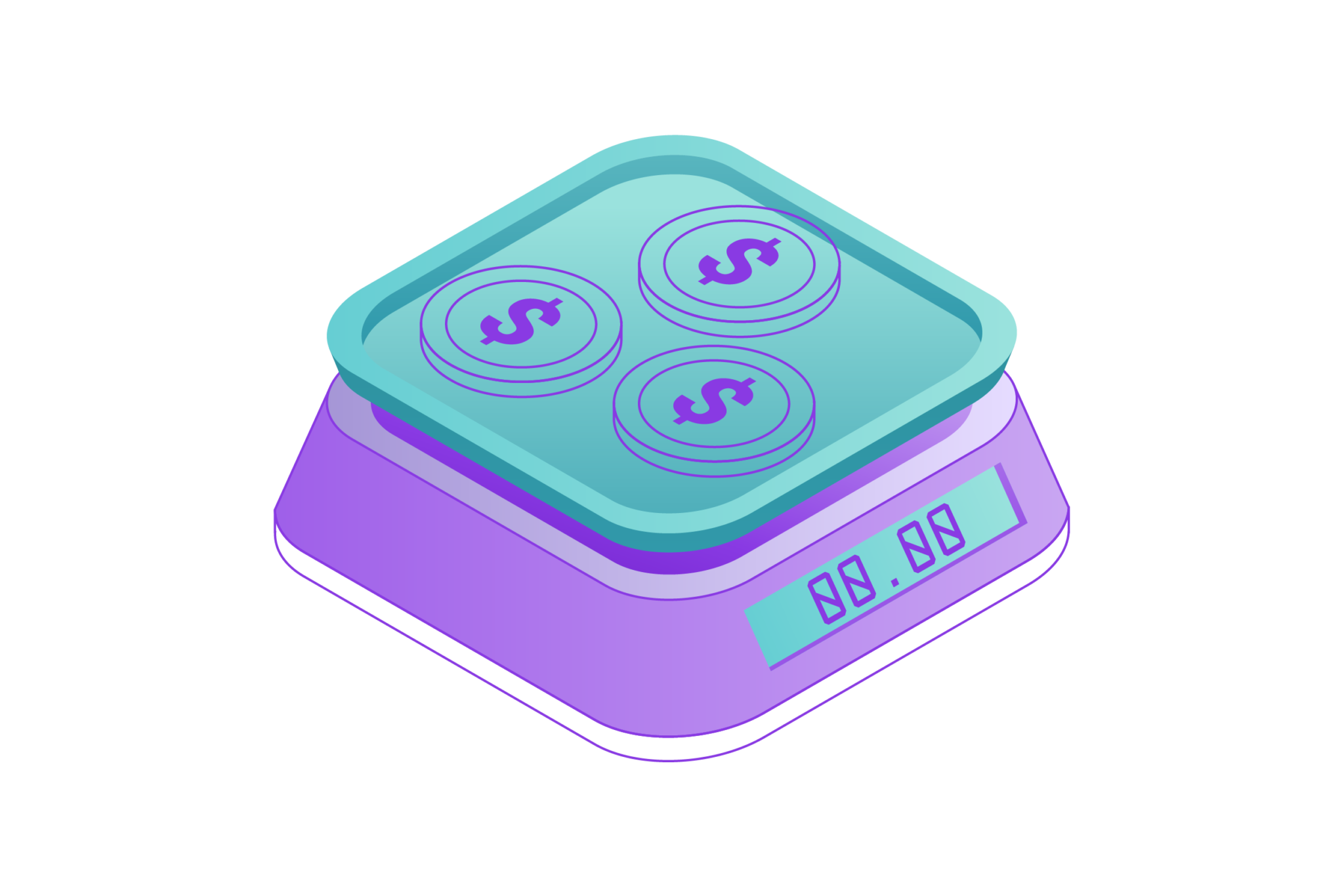
Margin trading, which is a common financial strategy that increases gain but also risk, has been one of the most used strategies by traders and investors. Margin trading is a double-edged weapon, an exotic instrument presenting the enticing prospect of enormous wins and the scarier possibility of heavy losses. In essence, this demands an in-depth understanding of the internal structures and the potential risks. When margin-trading Traders have better cautiousness and in-depth knowledge of its mechanics and pitfalls, they will venture into margin trading with fewer mistakes.
Sailing over marginal trading depends on more than simple intuition; it calls for a well-disciplined approach with concrete risk management systems in place. Traders must exercise constant vigilance, particularly as market conditions may vary widely; thus, a minor movement may have significant consequences for their position. In a proactive trading environment, the traders should keep evaluating the market dynamics frequently, adapt to modified circumstances, and critically review the strategies. This high-risk, high-return investment technique is exemplified by the use of leveraging: borrowing funds to increase the size of a position. In this article, we will look at margin trading in detail, including its mechanisms, dangers and hand cards.
What is Margin Trading?

Margin trading is a financial tool that allows traders to increase their market exposure using their capital, which is not as limited as that of other traders. Traders are able to wield a much larger position size with the help of borrowed funds from a broker than is possible with only their own resources. This deal provides the possibility of reinforcing trader’s returns because it allows them to take advantage of major market changes.
At its core, the concept of margin trading relies on the concept of utilizing borrowed capital to expand trading abilities. When a trader participates in margin trading, he involves the broker in the arrangement where borrowing is involved. The borrowed money acts as a complementary pool to the trader’s own investment. This in turn enables the trader to take bigger positions in the market than they would be able to with their own funds. Such leverage could potentially lead to higher profits during good times in the market.
Nevertheless, margin trading carries with it some risks, and it is important that traders take particular measures to manage them carefully. Although it has enormous advantages, traders can also suffer losses that are even greater because of that amplification. The traders using borrowed capital and profit margins facilitate trade since the investment risks are not only the initial money of the traders but also the loaned funds. Finally, one needs to remember to generate a certain level of equity in the account to pay for possible losses and cover margin levels.
Furthermore, interest charges on borrowed funds constitute an added cost for margin trading, which also contributes to the process. This interest load can go up over a period and can eat into profits in case of a market reversal or lead to losses due to a market movement opposite to the trader’s positions. Therefore, we should consider the costs when evaluating whether margin trading is profitable.
For all its complexity and the risks that come with it, margin trading is still a favorite tool of many traders because it helps them maximize market exposure and increase potential profits. Also, such forex trading is contingent on market understanding, risk management tactics, and position monitoring in order to hedge the underlying risks.
Risks Associated with Margin Trading

Margin trading provides an opportunity for higher returns by allowing traders to play with borrowed money in the markets as a margin and make their exposure bigger. Nevertheless, this strategy is accompanied by a number of risks that must be thoroughly examined and carefully counted on. Here are some key risks associated with margin trading:Here are some key risks associated with margin trading:
Leverage Risk
Margin trading gives traders a chance to multiply their market availability by borrowing money from their broker. This leverage gives traders the opportunity to hold a larger position than their own funds can provide, which in turn can result in multiple magnifications of profits. However, leverage does double service, multiplying not only earnings but losses as well.
While margin traders are very susceptible to even the slightest fluctuation of the market, the risk of significant losses to these traders increases, especially for those with moderate leverage. The volatility of markets implies that traders should be careful when using leverage, and it makes them aware of the possible risks of trading. With prudent risk management strategies in place, including setting up appropriate stop-loss orders and diversifying positions, traders can handle leverage risks well and be protected from major losses.
Margin Call Risk
Margin trading requires a trader to keep a defined minimum amount of equity in the account, referred to as the maintenance margin. A low water level is a negative situation. The broker may make a margin call in that case if the security value in the account falls below this limit due to market losses. This way, the trader can either add further funds to the account that are being held as a margin or clear existing positions so that the required margin level is restored.
Liquidation cases arise when a trader fails to meet a margin call. This can result in a trader selling positions at unfavorable prices, thus amplifying the losses. The liquidity level has to be correctly assessed, as well as closely monitored to make sure that all the margins are being complied with. Furthermore, they should have alternative actions that they can take to react promptly to margin calls and keep away from margin-risk-related burdens.
Interest Rate Risk
Margin trading involves brokering money lending, usually at an interest charge. Even though it is possible to enhance market exposure by borrowing, an increase in interest rates may affect the cost of such borrowing and the profitability of margin trades. When interest rates increase, the cost of borrowing will rise, which may decrease the trader’s net earnings.
Also Read: Market Making: Strategies and Techniques (August 2024)
On the contrary, decreasing interest rates make loans cheaper, thus increasing profitability. Traders need to keep watch of the current interest rates as well as the potential future effect on margin trading costs. Furthermore, they might adopt a hedging technique or reshape the trading strategies rapidly to the new interest rate conditions in order to manage the interest rate risk well.
Market Risk
Market risk is inherent in all kinds of trading, as it is the chance of losses because of market changes in asset prices. Margin trading offers traders great leverage while incurring market risks. These are due to traders being highly leveraged and susceptible to the price movements of the assets they trade. Unexpected events, economic indicators, geopolitical tensions, and other factors have an unpredictable effect on market sentiment and may cause volatility. By doing so, the price of the asset is rapidly changing.
Traders need to conduct deep market research, keep track of the news and events relevant to the market, and use risk management techniques like diversification and position sizing to protect their capital from the impact of market risk. Furthermore, having a disciplined approach to trading and always following the pre-establishment risk management guidelines may prove to be of great benefit while dealing with market fluctuations.
Liquidity Risk
Margin trading can subject traders to liquidity risk, especially when trading with volatile markets or with securities that have low liquidity. Liquidity risk occurs, when traders fail to execute their trade at desired prices due to the absence of market participants who are willing to buy or sell the assets. Margin trading exposes liquidity risk at all times, but liquidity may be short during times of market stress or when traders need to liquidate their positions as a means of meeting margin calls or covering losses.
Liquid securities widening the bid-offers (i.e., on their quotes) as well as the slippage (i.e., on the execution) might lead to more noticeable losses for the traders than is expected. In terms of liquidity risk, it is important for traders to pay attention to the liquidity of the assets they trade and how the use of leverage affects the strategy. It is necessary to adjust the style of trading to deal with periods of market volatility or illiquidity.
Psychological Risk
Margin trading can bring psychological risks for traders as it involves higher sums of money and a possibility of loss that can be great. The psychological effect of trading with borrowed money may worsen the emotions of stress and anxiety and have a tendency towards impulsiveness, which will lead to poor judgment and irrational decisions making. Traders often find themselves at the deep end of the pool, as they experience FOMO or FOLO, in sacrifice of their trading plans and for taking unwarranted risks.
Actually, the necessity of meeting the margin requirements or position-saving creates even more pressure, which worsens the psychological response and therefore increases the risk for the trader to make the wrong trading decisions. In order to manage psychological risk, traders should adopt emotional resilience, maintain rigor in their trading approach, and put into place strategies and techniques to filter out the effects of emotions on their decisions making. This method might be comprised of methods like meditation, journaling, and reaching out to mentors and trading communities for the restoration of mental health and performance improvement in trading.
Margin Trading Potential Rewards

Margin trading may lead to higher rewards by utilizing leverage to expand the potential gains and the market’s stance. Here are some key aspects of the potential rewards associated with margin trading:Here are some key aspects of the potential rewards associated with margin trading:
Enhanced Profit Opportunities
Margin trading allows traders to gear their portfolios, meaning that a trader can have a controlling share of larger positions in the market than what he could otherwise trade with his capital alone. Accumulated wealth leads to the facade that prices are more unpredictable; thus, the possibility of significant gains and losses increases while the outcome is not guaranteed.
Using capital obtained through borrowing, traders can increase their returns two-fold because nearly every price fluctuation will turn into a large yield when it is multiplied by the bought position. Furthermore, in a margin trading situation, the traders can invest beyond a cash-only account to capitalize on the short-term trading benefits, which may not be possible with cash alone since the doors become open for them to enter and exit the positions quickly if they find a favorable price movement.
Diversification and Portfolio Growth
With margin trading, a trader can take advantage of the opportunity for portfolio diversification and earn profits from a wider array of assets and markets. With their augmented purchasing power, traders are able to diversify their assets over many asset classes, sectors and geographical regions, thus decreasing the risk of a possible concentration in the portfolio.
This diversification not only cushions risk against uncertainty but can also possibly produce higher long-term earnings by taking advantage of more sources of investment growth. Also, margin trading offers traders an opportunity to access markets and investment opportunities that might have previously been out of their reach by leveraging the capital they have, this in turn enables the portfolio to grow, thus engaging in new asset classes or markets. Through diversification of their portfolios via margin trading, traders basically increase their exposure, and they are able to exploit a broader scope of investment opportunities in order to achieve a better rate of return over a longer period of time.
Flexibility and Liquidity
Margin trading allows traders to have a level of flexibility and liquidity that are not available using traditional cash-only trading accounts. Through margin accounts, traders can buy and sell positions promptly, exploit short-term trading opportunities, and change strategies when market conditions require.
Also Read: Market Maker Options: Definition and How They Make Money
Responsiveness is especially valued in dynamic markets, which are highly prone to sudden opportunities and evaporations of such. Moreover, margin trading gives the traders access to liquidity, which, in turn, eases trading and gives them the opportunity to execute trades at prices offered competitively. This liquidity guarantees better entry and exit points for traders who can enter and exit even small positions; hence, it helps traders react swiftly to market opportunities, thus enabling them to manage their portfolios more effectively.
Hedging and Risk Management
The margin trading option is a dynamic tool that is useful for both hedging and risk management in investments. By using leverage, portfolios can be protected from potential losses in other trades, and adverse market movements can be hedged against, resulting in an overall higher value for the portfolio. One way the trader does it is by short selling the different stock with a long position to hedge against the losses in the first stock.
Besides that, the use of margin trading can help traders apply advanced risk management techniques, including stop-loss orders and options trading, that can reduce the possible loss and protect the traded capital as well. This way, traders are able to manage the risk and reduce retail margin trading and leverage, which in turn protects their investment portfolios and maximizes profit at the end of the day.
Research and Analysis
Margin trading allows traders deeper market exploration; hence, they are better equipped to make wise trading decisions and greater profits. Traders only have control over the smaller positions. Therefore, they have to focus more on researching market trends, analyzing company fundamentals and conducting technical analysis.
This can lead to more research and analysis, which will give traders some useful information, such as how the market behaves in certain situations, and might pave the way towards lucrative investment opportunities as well as help them predict market trends. Besides, margin trade provides traders with more advanced trading strategies, such as short selling and options trading, that can perfectly complement a trader’s ability to benefit from price movements in the market.
Access to Advanced Trading Tools
Margins trading more often than not comes with the use of sophisticated trading systems and instruments, whose unavailability is common in cash-only accounts. These platforms usually provide functionality like real time market data, advanced charting tools, and customized trading algorithms, which give traders the opportunity to make trades in an efficient manner.
The platforms also allow for access to a broad range of financial instruments and markets, including stocks, options, futures and forex, encouraging traders to benchmark portfolio diversity and identify new investment opportunities. In addition to using sophisticated trading tools and platforms, traders can minimize the time required for the trading process, perfect their trading strategies, and finally be successful in the financial markets.
Conclusion
Making profits in margin trading is difficult, and it depends neither on luck nor on chance but rather on deliberate and informed decisions. It comes down to knowledge convergence, discipline, and strategic thinking. What divides true investors from gamblers is not the fact that the latter are banking on “blind luck” while the former are not, but rather the amount of time and effort they spend analyzing market trends, weighing the associated risks, and making corrections when necessary.
Thus, being cognizant of personal risk tolerance and financial aspirations is one of the most important issues. The traders themselves have to examine how much they have the ability to take the losses and also have the discipline not to increase the risks by increasing the positions beyond their means. Applying good risk management practices in the form of setting stop-loss orders and diversifying portfolios are the tools that can prevent traders from losing all their investments and having their trading venture fail.
In summary, margin trading is a reality of the statement: “knowledge is power”. Those who equip themselves with a complete understanding and do not forget to soberly consider the consequences are close to having leverage to earn from the trade. Yet, the disregard of those who would trample on it, driven by greed or without any risk perception, may end up trapped in the very instability that they strive to exploit.
Disclaimer: The information provided by Quant Matter in this article is intended for general informational purposes and does not reflect the company’s opinion. It is not intended as investment advice or a recommendation. Readers are strongly advised to conduct their own thorough research and consult with a qualified financial advisor before making any financial decisions.

I craft stories that make complex ideas clear. I simplify the blend of data science, machine learning, and crypto trading, showcasing how advanced tech and quantitative models analyze data for informed trading choices. Join me in exploring the realm of quantitative trading, where my narratives make intricate concepts easy to grasp.
- Alifia Berizkyhttps://quantmatter.com/author/alifia-berizky/
- Alifia Berizkyhttps://quantmatter.com/author/alifia-berizky/
- Alifia Berizkyhttps://quantmatter.com/author/alifia-berizky/
- Alifia Berizkyhttps://quantmatter.com/author/alifia-berizky/
